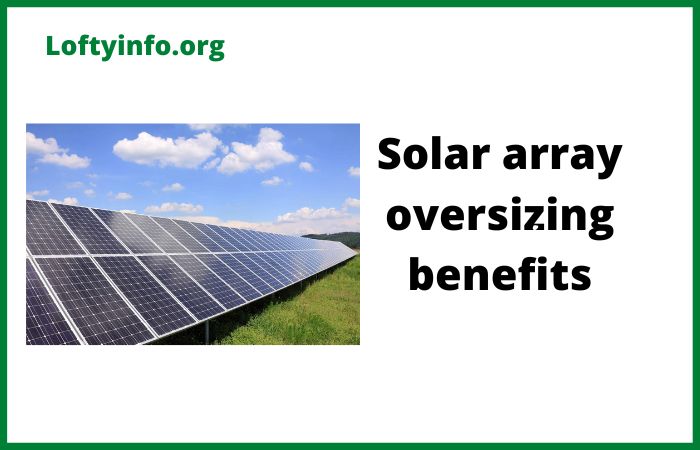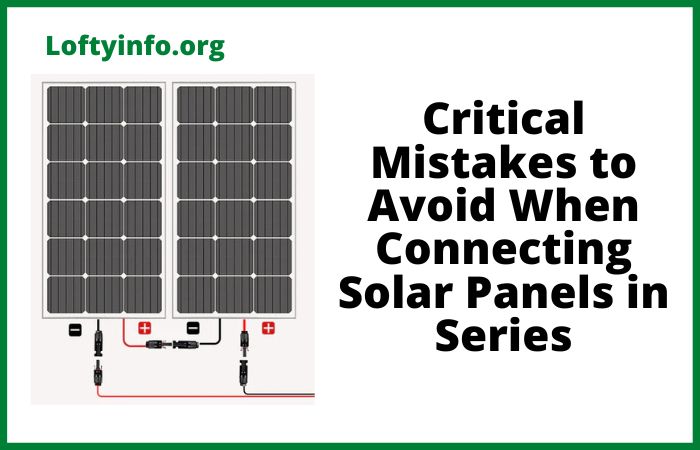The Benefits of Solar Panels on Homes
As energy costs continue to rise and environmental concerns become increasingly urgent, homeowners worldwide are turning to renewable energy solutions.
Among these, solar technology stands out as one of the most accessible and effective options available today.
Installing photovoltaic systems on residential properties has transformed from a niche environmental statement into a practical financial decision that offers multiple advantages extending far beyond simple electricity generation.
The benefits of solar panels on homes encompass economic savings, environmental protection, increased property value and even physical protection for your dwelling itself.
The Benefits of Solar Panels on Homes
1) Dramatic Reduction in Monthly Energy Bills
The most immediate and tangible advantage homeowners experience after installation is the significant decrease in electricity expenses.
Once your system is operational, you begin generating your own power from sunlight, reducing or even eliminating your dependence on grid electricity.
Depending on your system size, location and energy consumption patterns, many homeowners report savings of 50% to 90% on their monthly utility bills and even up to 100% savings on electricity bills for those that are completely off grid.
In sunny regions, households can produce enough energy to meet their entire electrical needs during peak production hours.
What makes this benefit particularly compelling is the long-term financial impact.
While the initial investment requires capital, solar systems typically pay for themselves within few years through accumulated savings.
After this payback period, you essentially receive free electricity for the remaining lifespan of your panels which typically exceeds 25 to 30 years.
With traditional electricity rates rising by an average of 2% to 3% annually, your savings compound over time potentially amounting to tens of thousands of dollars throughout the system’s lifetime.
Many regions offer net metering programs that allow you to sell excess energy back to the grid.
This helps in creating a potential income stream or further offsetting costs during months when your production exceeds consumption.
2) Environmental Impact and Carbon Footprint Reduction
Residential solar installations contribute significantly to combating climate change by reducing reliance on fossil fuel-generated electricity.
The average home solar system offsets approximately three to four tons of carbon dioxide annually, equivalent to planting over 100 trees each year.
Over a 25-year lifespan, a single residential system prevents roughly 100 tons of carbon dioxide from entering the atmosphere.
Beyond carbon reduction, solar energy generation produces no air pollutants, particulate matter or harmful emissions that contribute to smog, acid rain,or respiratory health issues.
Traditional power plants, particularly those burning coal or natural gas, release sulfur dioxide, nitrogen oxides and mercury into the environment.
By generating clean energy at the point of consumption, homeowners directly reduce demand from these polluting facilities.
This localized generation also decreases transmission losses that occur when electricity travels long distances through power lines, making solar an inherently more efficient energy solution.
For environmentally conscious homeowners, installing solar panels represents one of the most impactful personal actions available to reduce environmental harm while maintaining modern living standards.
3) Increased Property Value and Market Appeal
Real estate studies consistently demonstrate that homes equipped with solar energy systems command higher sale prices than comparable properties without them.
Research from the Lawrence Berkeley National Laboratory found that buyers are willing to pay approximately $15,000 more for homes with average-sized solar installations.
This premium reflects the understanding among buyers that they will benefit from reduced energy costs and the remaining lifespan of the system.
The appeal extends beyond pure financial calculation. As energy consciousness grows among homebuyers, solar-equipped properties stand out in competitive markets.
They signal forward-thinking ownership, lower operating costs and environmental responsibility all attractive qualities to modern buyers.
Properties with solar installations also tend to sell faster than those without, reducing time on market by an average of 20%.
This advantage is particularly pronounced in regions with high electricity costs or strong environmental values.
For homeowners planning to sell within the next decade, solar installation can be viewed not merely as an energy solution but as a strategic home improvement that enhances market competitiveness and return on investment.
4) Energy Independence and Grid Reliability
Solar panels provide homeowners with a degree of energy autonomy that traditional grid-dependent households cannot achieve.
While most residential systems remain connected to the utility grid, they fundamentally alter your relationship with your power provider.
You become both a consumer and producer, reducing vulnerability to utility rate increases, supply disruptions, and policy changes beyond your control.
When paired with battery storage systems, this independence becomes even more pronounced.
Modern solar batteries can store excess energy generated during sunny periods for use during evenings, cloudy days, or power outages.
This capability has proven invaluable in regions experiencing increased grid instability due to aging infrastructure, extreme weather events or rolling blackouts.
During emergencies when neighbors lose power, solar-equipped homes with battery backup can maintain essential functions like refrigeration, heating or cooling, communications and medical equipment.
This reliability provides peace of mind that extends beyond financial considerations, offering genuine security for your family’s comfort and safety.
As climate change increases the frequency of severe weather events and grid stress, this resilience advantage will likely become increasingly valuable.
5) Low Maintenance Requirements and Durability
Contrary to some misconceptions, solar energy systems require minimal ongoing maintenance once installed.
Panels have no moving parts, making them remarkably durable and resistant to wear.
Most manufacturers warranty their panels for 25 to 30 years and many systems continue producing electricity well beyond this period, albeit at slightly reduced efficiency.
Routine maintenance typically involves nothing more than occasional cleaning to remove dust, leaves, pollen or debris that might reduce efficiency.
In most climates, rainfall provides adequate cleaning naturally.
For homeowners in particularly dusty or pollen-heavy areas, an annual or semi-annual cleaning with a garden hose or soft brush is usually sufficient.
Unlike heating and cooling systems that require regular servicing, filter changes and component replacements, solar systems operate passively and reliably.
The inverter, which converts DC power from panels to AC power for your home, may require replacement once during the system’s lifetime but this represents a relatively minor maintenance cost.
Modern monitoring systems allow homeowners to track production in real-time via smartphone apps, making it easy to identify any performance issues immediately.
This combination of durability, simplicity and transparency makes solar one of the most maintenance-friendly home improvements available.
6) Physical Roof Protection and Extended Lifespan
An often-overlooked advantage of residential solar installations is the protective layer they provide for your roof structure.
Solar panels act as a shield, absorbing the intensity of direct sunlight, rain, snow, hail and debris that would otherwise directly impact your roofing materials.
This protection can significantly extend the lifespan of the covered roof sections.
Ultraviolet radiation from constant sun exposure degrades roofing materials over time, causing shingles to become brittle, crack and lose granules.
By blocking this direct exposure, panels preserve the underlying roof, maintaining its structural integrity and water-resistance longer than exposed sections.
This protective effect is particularly valuable in regions with intense sun exposure or extreme temperature fluctuations.
The shaded roof sections also experience less thermal expansion and contraction, reducing the stress cycles that contribute to material fatigue and failure.
During severe weather, panels provide an additional barrier against hail impact and wind-driven debris.
While the panels themselves are engineered to withstand such conditions, they simultaneously protect the vulnerable roofing beneath them.
This dual function means that sections of your roof covered by solar panels may require repairs or replacement less frequently than exposed areas.
When eventual roof replacement becomes necessary, the extended lifespan of protected sections can reduce the overall scope and cost of roofing work.
Some homeowners even time their solar installation to coincide with roof replacement, maximizing the protective benefit for new roofing materials and ensuring both systems have aligned lifespans.
7) Government Incentives and Financial Support
Various federal, state, and local programs significantly reduce the net cost of going solar, making the technology more accessible than ever before.
The federal Investment Tax Credit (ITC) allows homeowners to deduct a substantial percentage of their solar installation costs from federal taxes.
While this percentage has varied over the years, it represents thousands of dollars in direct savings for most installations.
Beyond federal incentives, many states offer additional tax credits, rebates or performance-based incentives that further reduce upfront costs.
Some municipalities provide property tax exemptions, ensuring that the added home value from solar installation doesn’t increase property tax burden.
Utility companies in certain regions offer rebates or preferential rates for solar customers.
These layered incentives can reduce the effective cost of a solar system by 30% to 50% or more, dramatically shortening the payback period.
Financial products have also evolved to make solar more accessible.
Solar loans, home equity financing, and lease or power purchase agreements provide options for homeowners who prefer not to pay the full upfront cost.
Some programs require no down payment, allowing you to begin saving on electricity costs immediately while financing the system through those same savings.
As the solar industry has matured, these financial mechanisms have become increasingly favorable, with lower interest rates and more flexible terms that accommodate various financial situations and preferences.
The decision to install solar panels represents a multifaceted investment that delivers returns across financial, environmental, and practical dimensions.
From substantial energy bill reductions and increased property values to environmental stewardship and enhanced roof protection, the benefits of solar panels on homes extend far beyond simple electricity generation.
As technology continues improving and costs continue declining, solar energy has transitioned from an alternative energy experiment to a mainstream home improvement that offers compelling advantages for nearly any homeowner.
Whether motivated by financial savings, environmental values, energy independence or simple practicality, residential solar installation stands as one of the most impactful decisions a homeowner can make for their property, their finances and the planet’s future.
low frequency inverter technical specifications explained
Benefits Of Oversizing Solar Array
Top considerations before adding more solar panels to your solar setup
3176 cat engine complete technical specs
Critical mistakes to avoid when connecting solar panels in series






